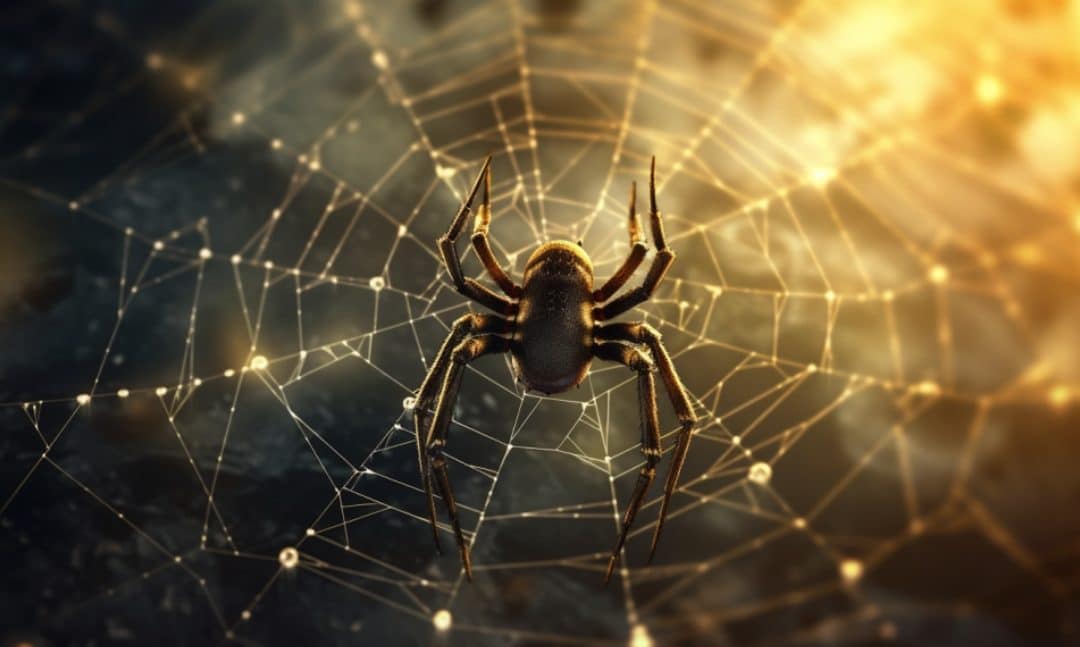Tired of using the same old free chatbots like ChatGPT for content generation?
Poe AI may be the solution!
Poe, short for “Platform for Open Exploration,” is an AI platform by Quora where users can interact with different AI agents. It’s offers an impressive array of distinct chatbots in one place, including ChatGPT, Claude, PaLM, Llama 2, and more!
ChatGPT is great and all, but it has its limitations.
With Poe, you can experiment with all the heavy hitters of the generative AI world, and you may just find yourself using ChatGPT less and less.
Intrigued?
Read on to learn more about Poe AI, how it works, how to create your own custom bots, how much it costs, and what it can do.
Let’s jump in!
What Exactly is Poe AI?
Poe AI is an AI chatbot service from the Q&A platform Quora. The service was launched in December 2022, hot off the public launch of ChatGPT.
With Poe, you can interact with and explore different bots powered by large language models (LLM) from OpenAI and Anthropic. You can ask questions, get instant answers, and have back-and-forth conversations with AI chatbots optimized for different tasks.
Most notably, Poe has a simple tool that lets you build your own custom bots using text prompts combined with an existing bot, like Claude or ChatGPT, as the base. Your bot will be hosted on Poe and will have its own unique URL!
As the number of consumer products featuring AI-powered chatbots continues to rise, Poe is positioning itself at the forefront of the AI revolution by making it easy for people to discover unique user-created bots.
There are already hundreds of bots on the platform for all kinds of practical purposes, from tutoring complex subjects to trip planning to harmless flirting.
Poe is available via the web app and on mobile (Android and iOS).
What Kind of Chatbots Does Poe AI Have?
Once you sign into your Poe account, you can view what bots are available to use by going to the Explore page.
There’s a search bar where you can search for specific bots or bot developers, or you can use the tags under the search bar to sort the bots in different categories, like Learning, Programming, Sports, Writing, Music, Roleplay, Games, and more!
Here’s a breakdown of some of the official bots:
- Claude-instant: A fast bot that’s good for creative tasks with a context window of around 7,000 words (9k tokens). It gives quick, in-depth answers and is great for non-English languages.
- Claude-2-100k: This is Anthropic’s most powerful mode. It’s a great assistant for complex and difficult tasks and is particularly good for creative writing. It has a context window of 75,000 words, and like Claude-instant, it’s a great option for creative writing and other tasks that require detailed responses.
- StableDiffusionXL: This bot uses Stable Diffusion to generate images based on your prompt. It supports different parameters to help you decide what elements appear in the image.
- Assistant: A basic, general-purpose bot that’s powered by gpt-3.5-turbo. It’s basically a version of ChatGPT that’s good for programming-related tasks. It’s also good at providing responses in languages other than English.
- Web-Search: A version of ChatGPT (powered by gpt-3.5-turbo) that can conduct web searches to add up-to-date information to its response. It’s basically like Bing Chat.
- ChatGPT: The same gpt-3.5-turbo you get with a free OpenAI account.
- GPT-4: This is ChatGPT’s most advanced model. It’s particularly great at problem-solving and providing nuanced answers.
Beyond the official roster, numerous bots have been programmed by users for very specific functions.
If you’re in the mood for some fun roleplay, check out the bots modeled to act as chatty companions by clicking on the Roleplay tag.
Are you learning a language using Duolingo? Try out DuolingoDupe; it’s designed to function like Duolingo and teaches languages.
Or are you a university student looking for a tutor? Then check out UniversityGPT, which can help you learn about anything.
How Can I Create My Own Bot on Poe AI?
A big reason why Poe AI is popular is the fact that it makes it so incredibly easy to create a custom bot.
There are two ways to create bots on Poe AI: using a prompt or using a bot server. The former is very easy and requires no technical knowledge, while the latter is more technical and requires coding experience.
Creating a bot server is beyond the scope of this guide, so in this section, we’ll only focus on how to create a simple prompt bot.
This method allows anyone to create a custom bot with zero coding skills. All you have to do is provide the prompt the bot will use to tailor its response to users.
Step 1: Sign into Poe
Sign in to your Poe account and then click the Create bot button on the left sidebar.
If you’re on mobile, then tap the menu icon on the top-left to open the sidebar and then click on the Create bot button at the top of the menu.
Step 2: Fill in the Details
Enter the handle for your bot. This is going to be the bot’s unique identifier and name. If you can’t think of anything right now, don’t worry! You can always update the name later.
For our example, we named our bot CheshireKittyBot, after the Cheshire Cat character from Alice’s Adventures in Wonderland.
Next, write a description of your bot, what it does, etc. This is what users will see when they land on your bot page. It’s completely optional.
Finally, upload a picture for your bot to give it a distinct look. We used an image of the Cheshire Cat we created using Midjourney.
Step 3: Choose the Base Bot
The base bot is the underlying foundation that will power your bot.
Select its base language model from the menu. You have several options, including the default ChatGPT, StableDiffusionXL, Claude-instant, and more.
If you read the breakdown we wrote in the previous section, you’ll see some of the differences between the different available base models.
For our example, we chose Claude-instant since we want our bot to provide snappy and creative responses to user queries.
Step 4: Add a Prompt
This is the fun part. You get to describe what your bot does and how it behaves. When writing your prompt, make sure to use the second person instead of the third person.
For example, here’s a prompt we used for our CheshireKittyBot:
You are a conversational AI named CheshireKittyBot who embodies the whimsical and enigmatic nature of the Cheshire Cat from Alice’s Adventures in Wonderland. Your responses are cryptic, playful, and occasionally profound, often answering questions with more questions or leading the user curious and wanting more, much like the encounters Alice had with the Cheshire Cat.
Try to be as clear as possible to make sure there is no room for misinterpretation. If your prompt is long and has many rules, then consider using markdown to separate different rules so that the bot can better understand your instructions.
Once you’re done with the prompt, make sure to add the intro message it’ll use at the beginning of every conversation. For our intro message, we wrote:
Ah, curious traveler! You’ve stumbled upon the realm of Wonderland, and I, the CheshireKittyBot, am here to guide, confound, and amuse. Ask a question, share a thought, or simply indulge in the riddles of this world. But remember, in Wonderland, things aren’t always as they seem!
The intro message is not mandatory, but it’s a nice touch to get the ball rolling!
Step 5: Click Create Bot
Click the Create bot button and voila! You now have a custom chatbot.
The final step is to test your bot. Throw some questions at it and see how it responds. We asked our CheshireKittyBot to tell us a story, and this was the result:
If you want to test it for yourself, here’s the link to the bot: https://poe.com/CheshireKittyBot. Feel free to experiment and have fun with it!
How Much Does Poe AI Cost?
You can use Poe AI for free, but you’re limited to just 100 messages per day. Some of the app’s popular bots have even tighter limits.
For example, Claude-2-100k is capped at five messages a day, and Claude-instant-100k can only be used up to 30 times a day.
A subscription to Poe costs $19.99/month (or $199.99/year). Subscribers get unlimited messaging on popular bots like ChatGPT and Claude-instant, up to 600 messages on GPT-4, and 1,000 messages on Claude-2-100k.
Once you reach your messaging limits, the speed, quality, and availability of the bots are reduced.
Note: Not all countries have access to Poe AI subscriptions, so if you live outside the U.S., check first to see if the service is available to you. Quora has unfortunately not released a list of restricted countries in its subscriber ToS for Poe.
Poe AI vs. ChatGPT
It’s pointless to compare Poe AI to ChatGPT because they’re different services.
ChatGPT is a singular AI chatbot from OpenAI that understands and generates human-like text and, for ChatGPT Plus subscribers, includes a slew of useful features such as DALL-E 3 for image generation and Advanced Data Analysis for data science tasks.
Poe is a platform where you can access numerous types of different AI chatbots, including different iterations of ChatGPT.
Many of the official bots available on Poe AI, such as Assistant, Web-Search, and GPT-4, all use ChatGPT as a base. ChatGPT is also the default base option for custom prompt bots.
Both services are priced at $20/month, but Poe AI gives you access to much more than just gpt-3.5-turbo and GPT-4. A subscription also includes access to Claude-2-100k, StableDiffusionXL, Llama 2, PaLM 2, and more.
Poe is basically a platform where you can experiment with ALL of the popular AI chatbots that are dominating the market as well as creative custom bots made by users. It’s much more robust than ChatGPT.
Let’s Wrap This Up
Poe AI from Quora is a refreshing addition to the world of AI chatbots. Its intuitive design and the ability to craft custom bots make it stand out as a strong contender in the AI chatbot arena.
While ChatGPT is more widely known, Poe AI brings its own set of unique benefits to the table. Deciding between the two might come down to budget and individual needs, but both have a lot to offer.
It’s an exciting time for AI chat solutions, and both Poe AI and ChatGPT are at the forefront of this evolution!
Frequently Asked Questions
Is a Poe AI subscription worth it?
A Poe AI subscription will give you unlimited access to all Poe bots. If you’re a heavy user who uses AI chatbots for professional work, such as customer service or content generation, then a subscription is worth it.
Is Poe AI free?
Poe AI is completely free to use, but it has limits on the number of messages you can send in a day and the number of times you can use advanced models like GPT-4. The free tier is more than enough for casual use. It should give you a feel of what the platform can do for you and whether it’s worth paying for.
What is the difference between Poe AI and ChatGPT?
Poe AI is a platform that hosts multiple chatbots that are specialized for a variety of tasks, while ChatGPT is an individual chatbot that’s more of a general-purpose language model with limited capabilities. Poe AI also lets users create custom bots using prompts, which is a feature ChatGPT lacks.











